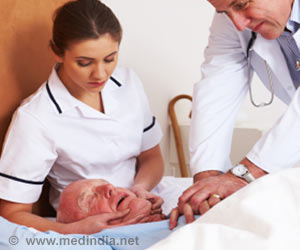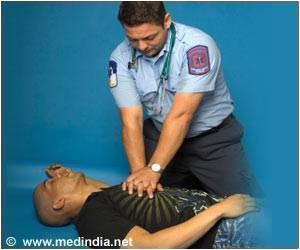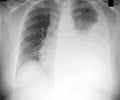Receiving cardiopulmonary resuscitation (CPR) from a bystander - compared with not - was associated with better overall and neurologically favorable survival.

‘Receiving cardiopulmonary resuscitation (CPR) from a bystander - compared with not - was associated with better overall and neurologically favorable survival for children who had out-of-hospital cardiac arrest.’





Receiving cardiopulmonary resuscitation (CPR) from a bystander -
compared with not - was associated with better overall and
neurologically favorable survival for children and adolescents who had
out-of-hospital cardiac arrest, revealed an article published online
by JAMA Pediatrics. The study is being presented at the American Heart Association's Scientific Sessions 2016.Maryam Y. Naim of Children's Hospital of Philadelphia, and coauthors analyzed data from the Cardiac Arrest Registry to Enhance Survival for OHCAs in children younger than 18 from January 2013 through December 2015. The study included 3,900 children with OHCA, of whom 2,317 (59.4%) were infants, 2,346 (60.2%) were female and 3,595 (92.2%) had nonshockable heart rhythms. Cardiac arrests that occur in infants are most likely secondary to sudden infant death syndrome, according to the report.
The authors report-
- CPR from bystanders was performed on 1,814 children (46.5%).
- Overall survival was 11.3% and neurologically favorable survival was 9.1%.
Advertisement
- CPR from a bystander was associated with better odds of overall survival and neurologically favorable survival compared with none.
Advertisement
Limitations to the study are that the data are observational and causality cannot be established.
"Bystander CPR is associated with improved outcomes in children with OHCA. Conventional BCPR [bystander CPR] is associated with improved outcomes compared with COR [compression-only CPR] and, among infants, there was no benefit of BCPR unless ventilations were provided. Efforts to improve the provision of CPR in minority communities and increasing the use of conventional BCPR may improve outcomes for children with OHCA," the study concludes.
Source-Eurekalert









